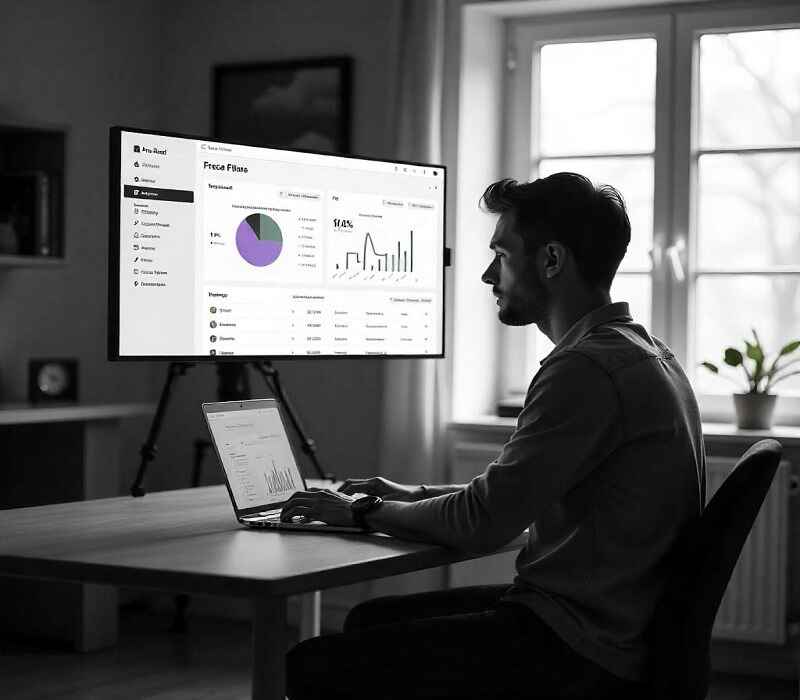Introduction:
In the world of user interface (UI) design, efficiency and user experience are paramount. ComfyUI Workflows have emerged as a powerful solution for designers and developers looking to streamline their processes, enhance collaboration, and deliver exceptional user experiences. This article dives deep into everything you need to know about ComfyUI Workflows, from their core features to their benefits and practical applications.
What are ComfyUI Workflows?
ComfyUI Workflows are structured processes designed to simplify and optimize the creation of user interfaces. They provide a framework for designers and developers to collaborate effectively, automate repetitive tasks, and ensure consistency across projects. By integrating tools, templates, and best practices, ComfyUI Workflows enable teams to focus on creativity and innovation while reducing manual effort.
Key Features of ComfyUI Workflows
1. Drag-and-Drop Interface
ComfyUI Workflows often feature an intuitive drag-and-drop interface, making it easy for designers to create and modify UI elements without extensive coding knowledge.
2. Pre-Built Templates
A library of pre-built templates allows teams to jumpstart their projects, saving time and ensuring consistency across designs.
3. Collaboration Tools
Real-time collaboration features enable designers, developers, and stakeholders to work together seamlessly, regardless of their location.
4. Automation Capabilities
Automation tools handle repetitive tasks like resizing assets, generating code, and testing UI elements, freeing up time for more creative work.
5. Cross-Platform Compatibility
ComfyUI Workflows are designed to work across multiple platforms, ensuring that UIs are consistent and functional on all devices.
6. Version Control
Built-in version control allows teams to track changes, revert to previous designs, and maintain a clear history of project evolution.
7. Integration with Design Tools
ComfyUI Workflows integrate seamlessly with popular design tools like Figma, Sketch, and Adobe XD, enhancing their functionality.
8. Customizable Components
Designers can create and save reusable components, ensuring consistency and speeding up the design process.
9. User Testing and Feedback
Built-in tools for user testing and feedback collection help teams refine their designs based on real user interactions.
10. Analytics and Reporting
ComfyUI Workflows provide insights into design performance, helping teams make data-driven decisions.
Benefits of Using ComfyUI Workflows
1. Improved Efficiency
By automating repetitive tasks and providing pre-built templates, ComfyUI Workflows significantly reduce the time required to create and refine UIs.
2. Enhanced Collaboration
Real-time collaboration tools ensure that all team members are on the same page, reducing miscommunication and speeding up project timelines.
3. Consistency Across Projects
Reusable components and templates ensure that designs remain consistent, even when multiple team members are involved.
4. Better User Experience
With tools for user testing and feedback, ComfyUI Workflows help designers create UIs that truly resonate with their audience.
5. Scalability
ComfyUI Workflows are designed to scale with your team, making them suitable for both small projects and large, complex designs.
6. Cost-Effectiveness
By reducing manual effort and streamlining processes, ComfyUI Workflows help teams save time and resources.
Practical Applications of ComfyUI Workflows
1. Web Design
ComfyUI Workflows are ideal for creating responsive and visually appealing websites. Designers can use pre-built templates and automation tools to quickly prototype and refine their designs.
2. Mobile App Development
With cross-platform compatibility and reusable components, ComfyUI Workflows make it easy to design UIs for both iOS and Android apps.
3. Enterprise Software
Large-scale software projects benefit from the collaboration and version control features of ComfyUI Workflows, ensuring that all team members are aligned.
4. E-Commerce Platforms
ComfyUI Workflows help designers create intuitive and engaging interfaces for e-commerce platforms, enhancing the shopping experience for users.
5. Gaming Interfaces
The customizable components and interactive elements of ComfyUI Workflows are perfect for designing immersive gaming interfaces.
How to Get Started with ComfyUI Workflows
1. Choose the Right Tool
Select a ComfyUI Workflow tool that integrates with your existing design software and meets your team’s needs.
2. Explore Templates and Components
Familiarize yourself with the pre-built templates and components available in the tool.
3. Set Up Collaboration Channels
Invite team members to collaborate in real-time and establish clear communication channels.
4. Automate Repetitive Tasks
Identify tasks that can be automated, such as resizing assets or generating code, and set up workflows to handle them.
5. Test and Iterate
Use the built-in user testing tools to gather feedback and refine your designs.
6. Analyze and Optimize
Leverage analytics and reporting features to track performance and make data-driven improvements.
Challenges and Solutions in ComfyUI Workflows
1. Learning Curve
While ComfyUI Workflows are designed to be user-friendly, there may still be a learning curve for new users.
Solution: Provide training sessions and resources to help team members get up to speed.
2. Integration Issues
Integrating ComfyUI Workflows with existing tools and systems can sometimes be challenging.
Solution: Choose tools with robust integration capabilities and seek support from the provider if needed.
3. Over-Reliance on Automation
While automation is a key feature, over-reliance on it can lead to generic designs.
Solution: Use automation as a starting point, but always customize and refine designs to meet specific project needs.
Future Trends in ComfyUI Workflows
1. AI-Powered Design Assistance
AI tools are expected to play a larger role in ComfyUI Workflows, offering suggestions and automating complex tasks.
2. Enhanced Collaboration Features
Future updates may include more advanced collaboration tools, such as virtual reality (VR) workspaces.
3. Greater Customization Options
As demand grows, ComfyUI Workflows are likely to offer even more customizable components and templates.
4. Integration with Emerging Technologies
ComfyUI Workflows may integrate with emerging technologies like augmented reality (AR) and voice interfaces.
Conclusion
ComfyUI Workflows are revolutionizing the way designers and developers create user interfaces. By combining automation, collaboration, and customization, they empower teams to work more efficiently and deliver exceptional user experiences. Whether you’re designing a website, mobile app, or enterprise software, ComfyUI Workflows provide the tools and framework you need to succeed.
Embrace the future of UI design with ComfyUI Workflows and take your projects to the next level!
for more articles, visit our website : https://traceloans.blog/




The scalability benefits mentioned in the post are key for larger projects. It’s exciting to think about how workflows like these can help teams maintain consistency across large, complex builds. Have you found that the version control system works well for collaborative projects, or does it require additional management?